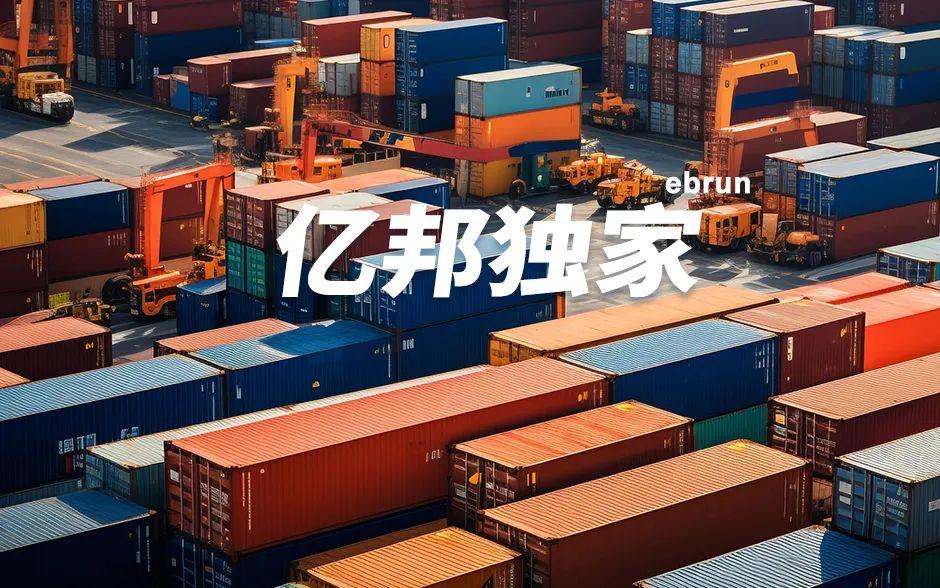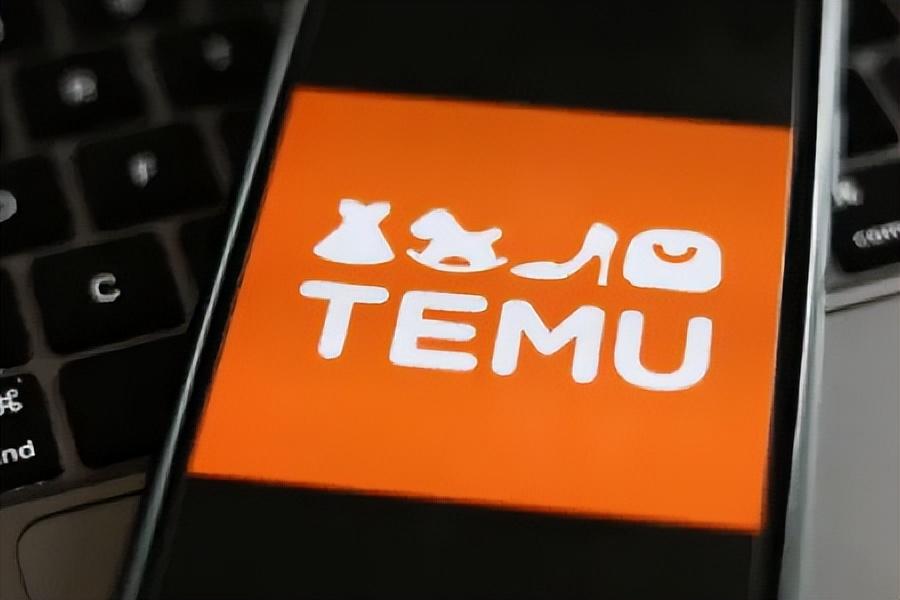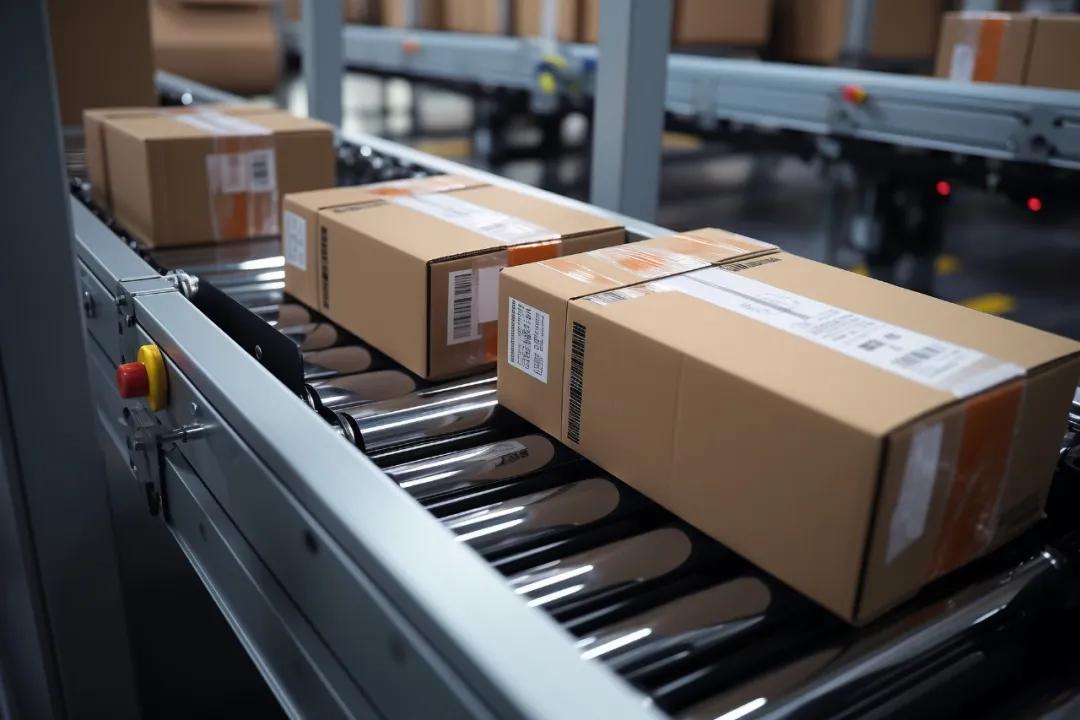30-day sprint! Order volume surges, profits soar, Temu's semi-warehousing draws various players

By | Wang Yu
Editor | He Yang
[Ebrun Original] Since mid-March, the "semi-warehousing" service of Temu has set off a strong upsurge in the cross-border merchant circle, reminiscent of the situation when Temu first launched in North America over a year ago.
"Quite hot! In just over a month, there have been over 1,600 customers coming to me for advice on semi-warehousing," said Mai Dong, who serves both as a Temu seller and service provider, to Ebrun.
As a merchant who began to lay out the Temu business at the end of 2022, he is deeply convinced of the platform's development prospects: "Semi-warehousing is definitely a new frontier and will create new traffic wonders. In the past, many merchants regretted not seizing the first wave of benefits from full warehousing. At least, they cannot miss this rare window of opportunity this time."
Among these eager novices, there are experienced cross-border e-commerce "old hands" who have done business on other platforms and have overseas stock, as well as newcomers who have only been involved in direct shipments of domestic small parcels. For the former, semi-warehousing provides convenience to expedite inventory turnover and open up new channels; for the latter, semi-warehousing is not only a new source of orders, but also a bold "voyage of exploration," guiding them to delve deeper into the cross-border race track.
Meanwhile, early merchants with a broader vision, like Mai Dong, see semi-warehousing as an opportunity for transformation. Currently, he is trying to transform from an ordinary Temu merchant into an integral part of Temu's semi-warehousing business—focused on comprehensive service provision for overseas cargo and logistics fulfillment.
In fact, Mai Dong is not the only example of "multi-faceted development." According to Ebrun's research, many senior Temu merchants have begun to change identities, shifting from their previous roles as "consumers" to selling directly on Temu, to the ranks of "water sellers," such as linking domestic factories and overseas warehouses, providing sources of supply for merchants who want to implement semi-warehousing.
The launch of Temu's semi-warehousing service seems to be giving birth to a completely new business ecosystem, creating a new community of interests that has already engaged or is about to engage various players, all of whom are excited beyond measure.

01
Facing the trend!
Various forces rush into the "virgin land" of semi-warehousing
Open up social media apps like Douyin or Little Red Book, search for "Temu logistics," and you will find that in just one month, various overseas warehouse advertisements and merchant consultation posts have completely occupied this topic.
"Since the end of February, inspired by the impact of Temu's semi-warehousing, we in the service industry can be said to have encountered a surge in inquiries. Broadly speaking, from a macro perspective, Temu is bringing another boom period to the overseas warehousing industry."
A large number of merchants are flocking to this burgeoning project, becoming a fresh force for the growth of Temu.
"Semi-warehousing is actually a way for Temu to break through its own logistics dilemma and add new flows to airfreight, which has already reached its peak," explained Chen Tinghui (merchant and service provider). "The most straightforward method is to seize the resources of overseas stocks that have already been thoroughly investigated and pull experienced cross-border sellers into their camp."
"For ten years, the development of the cross-border track has accumulated a large number of mature merchants, all of whom have been market-tested and have product vitality," pointed out Yidayun, a leading overseas warehouse service provider, to Ebrun. "Temu also intends to enable merchants to have a long-term operation based on local needs. Therefore, the two are indeed a perfect match."
This is not an empty statement. Faced with Temu's olive branch, a group of merchants who had previously been on Amazon and TikTok also began to move.
"The semi-warehousing recruitment events opened by Temu in the southern and eastern regions of China are quite popular, and sometimes extra seats are needed in the aisles," revealed Huang Xingrui, a cross-border seller from Yiwu, to Ebrun. According to his observations, the majority of participating merchants are similar to him, with a certain volume and overseas stock of Amazon merchants.
"We are a seller with a lot of stock, with a lot of the stock stored overseas, and a lot of slow-moving inventory, as well as some older products. Around March 20th, we started to link up on Temu and have already launched a few small explosive products with an average of seventy to eighty orders per day," he said. "The effect of clearing inventory is better than expected. After a while, we may consider selecting some large categories for Temu's semi-warehousing and delving deeper into them."
Compared to defining Temu's semi-warehousing as just clearing inventory for "firefighters," those who previously enjoyed the benefits of full warehousing on Temu have even greater expectations for this new model.
"We have now stopped our domestic platform business and are focusing on Temu. Semi-warehousing will be our main channel in the future," stated Liu Kun, general manager of Yiwu Zhenyuan Supply Chain Management Company. As a senior seller and service provider, he has increased his input into the Temu business this year. "Not afraid of early losses, the key is to make this model run through."
This bold layout is based on his judgment of the fundamentals of the Temu business. In his view, Temu's semi-warehousing is an anomaly in the trend of semi-warehousing in the entire industry—in the highest position and the most ambitious, aiming to benchmark against old giants like Amazon.

"Pinduoduo's strategic vision has always been sharp, from surpassing Alibaba in the domestic market to seizing the opportunity of high inflation in the United States and launching Temu, almost every step has been on point," Huang Xingrui exclaimed. "For us merchants, Temu's semi-warehousing paints a larger blueprint, bringing signals for continued investment. If it did not have ambition, we would be even more uneasy to go all in on this platform."
Although the threshold of overseas cargo required by semi-warehousing is relatively high, this does not mean that only mature large sellers are eligible to join; many small and medium full warehousing merchants who have never tried overseas warehousing also seek to expand through this.
Mai Dong revealed to Ebrun that among the sellers he consulted with, the vast majority were "overseas warehousing novices" who "need to be taught from scratch," and "completely unaware of how to price overseas warehousing, and have no experience dealing with overseas warehousing service providers."
"We are attracted by the traffic dividends promised by semi-warehousing. We have done full warehousing for a long time, but with an increasing number of source factory merchant-type merchants pouring in, we do not have outstanding supply chain advantages, which has made the living situation start to become difficult, with a slow decline in both profits and order volume."
“We had originally started considering scaling back on our Temu business, but semi-forwarding has shown us some new possibilities,” he said, “But designing an overseas warehouse layout is also indeed a tough problem.”
Addressing the contradiction between "wanting to" and "difficult to do", some people with foresight have sniffed out business opportunities. Chen Tinghui is one of them. He started with the Temu full-service business, but in the past two months, he has been going further and further on the road to becoming a service provider. “I am preparing for a cross-border supply chain project, one side is looking for cost-effective overseas warehouse service providers in the United States, the other is looking for various types of factory-based partners in China,” he briefed.
He stated that he will use years of accumulated experience in cross-border operations and local fulfillment resources to help domestic factories realize their supply chain strength, and set up pallets in the United States.
Even after witnessing the recent booming of the semi-forwarding service, Chen Tinghui's ignited ambition has given birth to a broader business blueprint. In his plan, Temu is just the first step. In the future, this platform can not only be used for Temu semi-forwarding business, but can also take on orders from other platforms, including distributorship and "to B" procurement orders.
02
The sweet and the worry of being the first to "eat the crab"
"While a strong wind can lift some people up, it can also throw some inexperienced speculators straight out," Chen Tinghui bluntly stated. The risks of inventory digestion cycle, customs clearance efficiency, lost packages, and cargo damage control should not be underestimated. This has essentially formed a selection mechanism for semi-forwarding merchants.
It can be said that although the semi-forwarding service looks plump and tempting, not everyone can chew it. How to safely "dock" its most fertile "initial dividend" has become an important issue for sellers at the forefront.

In this regard, Ebrun has obtained some insights on "how to 'eat the crab'" from several merchants who have already started the semi-forwarding service.
▎"How to eat the crab?"
Zhao Junming, a US-based merchant, said that he is an experienced veteran of cross-border operations with experience in running on three platforms: Walmart, Amazon, and eBay. His team is very familiar with local fulfillment and has an independent overseas pallet; thus, it can quickly place orders under the Temu semi-forwarding model. According to his observation, most merchants with similar resource endowments can seamlessly connect.
For sellers who follow the "low inventory, low assets" route, in addition to contacting overseas warehouses and stocking up on their own, they can also seek cooperation with overseas source service providers to operate as distributors "
"A more convenient and low inventory risk approach is to use virtual warehousing (after the system generates the last-mile transportation waybill, pack and send it to an overseas warehouse and then unpack and distribute)," Zhao Junming said, noting that although it may be in a gray area, the platform currently does not have restrictive regulations, and it has not strictly prohibited this niche approach. He estimates that the timeliness of virtual warehousing should barely be able to be controlled within the vital line of Temu and can be used for early-stage small-piece testing samples."
Another issue worth noting is how to select products for semi-forwarding. In contrast to the initial media saying "good for large items, good for high-priced items", most merchants have different opinions after actual operation.
Chen Tinghui said we should target the medium price range, preferably in the range of 20 to 60 yuan, with considerable profit and controllable risks. "Don't go for too low unit price items, the freight reversal is too severe, the logistics cost is several times higher than the product itself, making it unfeasible. At present, also do not engage in high unit price items, the return rate and penalty rate are unclear, doing so impulsively can easily lead to huge losses," he said.
Liu Kun also pointed out that it should be cautious to Ultra-Low Price SKUs because it is difficult for semi-forwarding to replicate the "one-day, ten thousand orders" style of large hot-selling goods and rapid turnover like full-forwarding. The rapid accumulation of warehousing costs will quickly cover the meager profits. And it is not advisable to try high-value large items, as, "if American consumers see products priced at hundreds or thousands of dollars on Temu, they are bound to be a little apprehensive, as the high-price mentality has not yet been established."
In addition, after positioning in the middle price range, it is necessary to select for high profits rather than high order quantity. Liu Kun explained, "We are lashing out on a random selection of products and not focusing on specific categories, but there is a top-level directive that the person selecting the product must follow, and that is to avoid low profits."
He believes that in terms of inventory cycle, as long as a single-digit number of products are sold in a day and there is good shipping stability, they can be kept online. "These are actually located in a marginally competitive area with enough profits to be made. On the contrary, those large explosion-type items selling thousands of units a day, we dare not restock, because an unknown manufacturer may emerge at any time with moisy low prices and deceive the customers."
▎"Is the crab delicious?"
Although the threshold for semi-forwarding is still a significant test for ordinary merchants for inventory and selection, the dividends brought by success in the new model are indeed inspiring.
“As one of the first to have eaten the crab, I must admit that semi-forwarding is indeed a boon,” Huang Xingrui said. From semi-forwarding, he felt Temu's emphasis on this new business.
He said, currently, the general standard for price is 75% of the same type of ASIN (Amazon Standard Identification Number used for product identification), and the profit margin is much larger than with full forwarding. There are even rumors that some of the earliest batch products, some niche categories can review products with costs of five dollars, for several tens of dollars, and even if the freight and damage loss are removed, they still have a profit margin of more than a dozen times."
Another good news that pleased merchants is the unexpected increase in order quantity speed. "When on the shelves on the same day, there are immediately sold, there are a dozen links, and the average daily sales volume is around 250 units," Huang Xingrui analyzed that Temu not only provides traffic for semi-forwarding products but also provides high-level subsidies in pricing. "I did a statistical analysis. Among these dozen or so products, about four or five of them are sold on the front-end at the supply price, and some are even lower than the supply price,"
Huang Xingrui was also surprised by the high responsiveness of Temu buyers: "Such convenient and efficient communication makes me feel like I have returned to the end of 2022--the last time the buyer was so responsive, and products were reviewed and put on the shelves the same day, was during the initial stage of Temu’s launch."
Chen Tinghui also added that semi-forwarding buyers also seem to be willing to "go easy" on merchants. In the price checking link, many times, bargaining can be negotiated by providing relevant ASIN links, raising the supply price, something not available with full-service.

▎"Crabs are inevitably a little difficult to eat"?
During the period when the first batch of players races to establish the semi-forwarding, they are also bearing all kinds of risks and pressures. In addition to the nervousness and time efficiency requirements of restocking and shipping, as well as the discomfort of moving from "Make to sell" to "Produce to sell". Unexpected incidents will also make merchants anxious.
As a merchant who does both Temu full-service and semi-forwarding, Zhao Junming stated that in the case of a lack of significant differentiation between the products under the two services, doing more with semi-forwarding means you can only do "less" with full forwarding, after all, the price-subsidy effort of semi-forwarding is greater at present.
According to his observation, once a large quantity of semi-managed SKUs are placed on the shelves of his store, a decrease in the number of orders for similar fully-managed SKUs will occur. Fortunately, the incremental increase of semi-managed SKUs now covers the decrease in fully-managed SKUs, which is still acceptable.
Another issue that troubles sellers is the immature pricing system. Liu Kun stated, "In early March, we price-checked a batch of about 200 SKUs, and at that time, the platform provided quite a substantial supply price. After these goods went through sea freight clearance and were prepared in the warehouse around the 26th, the platform informed us that due to pricing errors in the previous check, their supply price was still not the lowest across the entire network, so we could not go live. We had to lower the prices again."
Mai Dong pointed out that there were also similar situations encountered by cooperating sellers. He analyzed that there might be two reasons for the inconsistent nature of the pricing verification system:
First, Temu included the pricing of Amazon's drainage funds in the competitive price database, ignoring the fact that the pricing of these funds is not a naturally formed market average price; second, novice sellers who don't even understand the pricing verification blindly list items, underestimating the costs of overseas warehouses, which causes them to report prices that are too low and indirectly affects the judgment of the entire system.
03
Incubated in Temu’s semi-management
A fledgling ecosystem is quietly growing
Temu has always seemed to be an absolutely closed loop without a connection to the word "ecosystem." Unlike platforms such as Amazon and TikTok, Temu, which focuses on "full management," has not reserved much ecological space for service providers to share growth potential. Almost only a few large freight forwarders can, as carriers, take a share in Temu's development.
However, the introduction of semi-management is expected to change this status quo. Temu's doors are now opening to more types of stakeholders, with the biggest beneficiaries being players in the cross-border logistics industry.
"Logistics depends on commercial flow. The emergence of new commercial flow models itself is a boost for the logistics industry," said Yidawayun to Ebrun.

To some extent, the increase in orders for semi-managed Temu is effectively filling the low season for the logistics industry. Considering the special nature of Temu's "year-round big promotions, normalized burst orders", the arrival of the "zero low season era" for the logistics industry may not be an illusion after all, and the increased utilization of warehousing also helps logistics businesses retrieve funds and maintain a balanced cash flow.
On the other hand, Temu's platform operation strategy brings characteristics of "concentrated orders, flexible operations, and complex combination sales", presenting higher demands for logistics providers, forcing the entire industry to upgrade services systematically.
"Through the coordination of Temu's unique business format, we have experienced a new round of upgrades. Refined standard operating procedures, diverse service scenarios, and global localization management are key points," said CEO Li Qin of Yidawayun.
He added, "As the company with the most overseas warehousing managed in the industry, we have always believed that increasing investment in product development and polishing solutions are crucial to maintaining competitiveness in a changing time."
For example, in response to the scenarios of "group shipments" resulting from fierce competition, one needs to comprehensively streamline from multiple angles such as logistics adaptability, operational standards, and systems operations to achieve a 99.99% high-quality fulfillment rate. For the "low-priced" hot-selling and order mode, more innovative solutions need to be incorporated into capacity dispatch, inventory management, and replenishment suggestions to achieve optimal distribution of efficiency and cost.
Wang Xinqiang pointed out that sellers under semi-management are highly sensitive to transportation timeliness and freight rates, posing a huge challenge to logistics providers. Enhancing technical capabilities is a task that cannot be ignored.
"For example, to maximize the price advantage, we set up our warehouses in the Midwest region of the US, which has low land costs and human resource advantages. This also provides partition advantages for last-mile delivery prices. In order to improve response timeliness, we chose to invest extensively in self-built factories rather than leasing external ones," he explained.
However, it's not just logistics providers who benefit from the rise of semi-management at Temu, but also a group of "cross-border entrepreneurs" who transformed from traders to service providers.
With the gradual advancement of semi-management, there lies a key focus on how to reduce the threshold for factory-type sellers to stock overseas, which contains huge business opportunities. Factory-type sellers often lack sufficient operational capabilities for overseas warehousing, and are laymen in accounting for logistics costs and bargaining with warehouse providers. Hence, someone is needed to help them implement these practices. This is just the space for operators and overseas supply chain entrepreneurs like Mai Dong.
"Compared with traditional logistics service providers that have been cultivating the industry for many years, we 'amphibious' players are certainly very hard-pressed to win on hardware," said Mai Dong. "The key to differentiated competition lies in capturing niche markets such as the cross-border novices who have never had local cargo pools."
He pointed out that services provided by traditional logistics providers have a high threshold of understanding for this group. Most ordinary fully-managed sellers find it difficult to process complex pricing rules. "As soon as they see various forms, agreements, notices, and formal billing and reimbursement terms, many people start to feel discouraged," he added.
In response to the pain points of ordinary sellers, Mai Dong mentioned that, as an entrepreneur with both seller and service provider roles, he is very familiar with the procedures behind various practices. Additionally, he has a presence in the self-media/blogger world, providing more effective inquiry services for "private fans," who are explained the rules and logic of overseas warehousing in the most concise way to optimize intermediate processes and eliminate barriers to overseas warehousing operation as much as possible.
In addition, he can leverage his large fan base as a bargaining chip in negotiating prices with overseas warehouse owners to reduce overseas storage costs.
If traditional logistics service providers focus on addition and raise professionalism layer by layer, then, the new generation of service providers incubated by Temu's semi-management focuses on subtraction, aiming to simplify the operation and provide the easiest-to-understand "one-click service".
Moreover, the gradual formation of the education sector for Temu sellers provides a good place for some entrepreneurs. According to Ebrun's survey, a batch of bloggers in the field of Temu training on social media platforms such as Xiaohongshu and Douyin have successively appeared. Their revenue models include paid communities, operating courses, and specialized materials.
"Compared to Amazon and TikTok, the development of Temu's seller training and education is still in its infancy, and many operators in factories have come from other platform business lines." Ryan, an e-commerce knowledge blogger, noted.
However, it can be foreseen that as semi-management gradually unfolds in Temu's business landscape, there will be an increasing demand for professionals with a certain scale of enterprises (especially factories) who better understand the platform's logic, product selection strategies, and cross-border supply chain management.
Ryan believes that as the Temu platform matures, it also signifies the maturation of a whole set of compatible operational methodologies and professionals in the industry. A shift from "informal groups" to "dedicated personnel" is a high-probability event. In this process, there are bound to be market spaces for relevant knowledge services and profitable points waiting to be explored.
"The semi-supervised mode is like a turning point, dividing Temu's history into two parts," he said. "In the future, there will be more and more types of practitioners gathering on the outskirts of Temu."
Before this, the stereotyped impression of the merchant community towards this emerging platform may have been "closed-loop" and "low freedom". After this, keywords such as "ecological co-creation," "dividend overflow," and "compatibility" may appear more frequently.
[Copyright Notice] Ebrun advocates respecting and protecting intellectual property rights. Without permission, no one is allowed to copy, reproduce, or use the content of this website in any other way. If any copyright issues are found in the articles on this website, please provide copyright questions, identification, proof of copyright, contact information, etc. and send an email to run@ebrun.com. We will communicate and handle it in a timely manner.
